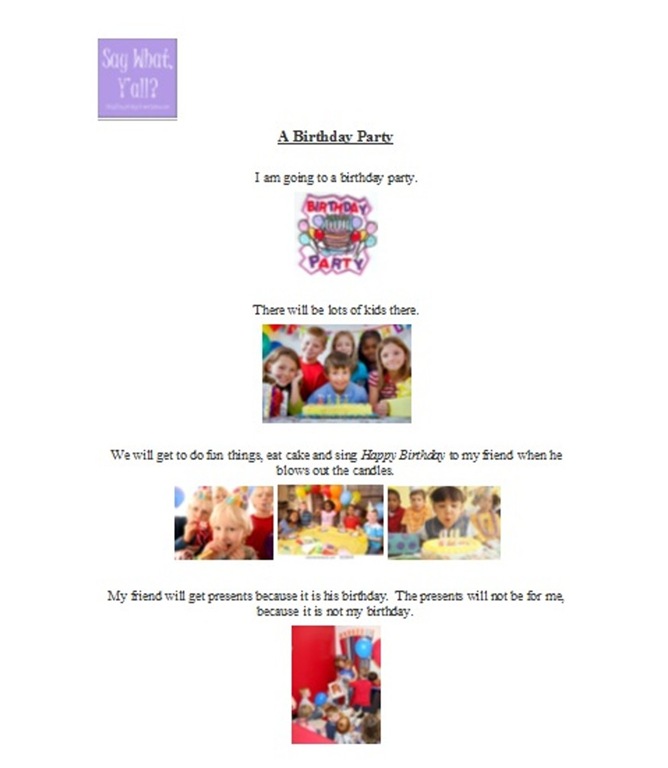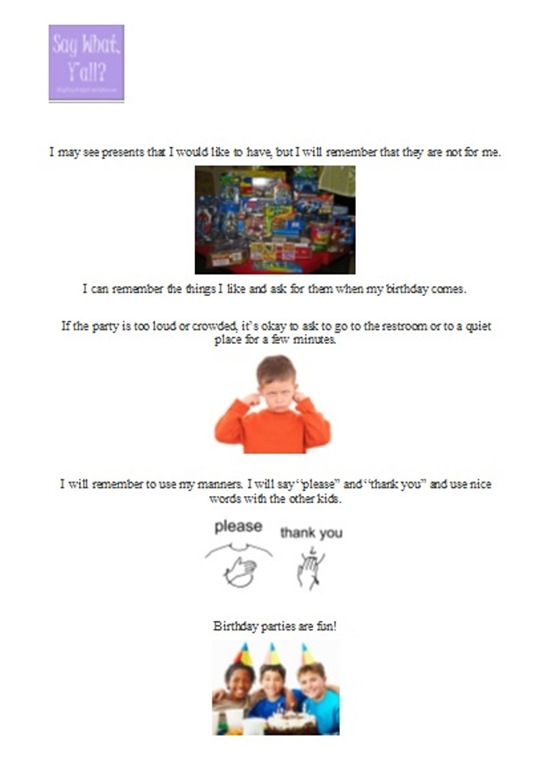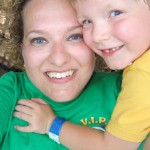By Haley Villines
I absolutely love social stories. I recommend them all the time to teachers and parents alike. Every now and then a regular ed teacher will jump on board and start writing them and I just love it! Granted, they don’t work for all kids (what does?!?), but when they do – it’s like magic.
If you aren’t familiar with the concept of social stories, here’s a little primer to get you started. The absolute guru of social stories has to be Carol Gray. She has published several books on writing social stories and even some pre-made stories that are handy to have in a pinch. This is a video from her website about one of her books.
As wonderful and useful as Mrs. Gray’s books are, I find that writing social stories that are specific to a particular child and his or her needs works best.
Social stories can be used in two different ways. The first kind of social story is sort of like a study guide. That’s what this blog post is about. I’ll write about the second kind – for behavior modification – in a follow-up post soon.
The “study guide” social story is used to prepare a child for an unknown and potentially difficult situation. If they know what’s coming, they’re a lot less likely to freak out when it happens. If they’ve thought through the possibilities rationally when their body and brain are calm, they’re a lot more likely to stay calm and rational throughout the actual situation.
Think about it this way: Pretend you have never been to a funeral and your aunt dies. You may have heard awful stories about funerals. You may expect the absolute worst, but you’re really not sure what’s going to happen. Hopefully, you have someone in your family that you can ask. Maybe your mother can give you a little run-down of what to expect and answer your questions, easing your mind and letting you know that while the funeral won’t be a whole lot of fun, it won’t be as bad as you originally thought.
Now, put yourself in a kid’s shoes. Every new experience (and there are a lot of them) is kind of like your aunt’s funeral. (Geez – that sounds morbid!) Kids have no idea what to expect in new situations and they probably don’t know how to act either.
A typically-developing child maybe able to pick up on the social cues around him and figure out what to do, but a child with special needs or one who has less self-control may be so overwhelmed that chaos is bound to happen. This becomes stressful for the child, the parent and everyone affected. Preparing the child in advance and letting him know not only what’s going to happen, but also what your expectations for behavior are may be the answer.
To write this kind of story, you’ll need to script it first.
- Write what’s going to happen in simple, child-friendly language.
- Make the story first-person (“I am going to the movies.”) so the child can process it easier.
- Once you’ve written the story, add pictures to help your child understand.
- If possible, real photos of the actual place where the situation will take place are best. If that’s not an option, Google images becomes your friend. You can find pictures of anything and everything to copy and paste into your story. Because of that, I highly recommend that you not do this step with your child. You just never know what surprising images you might accidentally bump into.
- Once you’ve copied and pasted your pictures, you’re ready to print and share with your child.
It’s best to read these stories just like you would any other book. Start a few days before the event and read it at bedtime or quiet time every day. Leave the story where your child can access it if they are curious and want to look at it on their own.
One of my favorite social stories and one that I find that many children need is about birthday parties. This one will give you an idea of how a social story looks.


Disclaimer: All of the images on this social story are copied & pasted from Google images. I don’t have copyright on any of them. This is a sample of a social story that would be used for personal and educational use, not for distribution or sale. Therefore, as much as I would like to, I am not uploading this Word document for free download.
As I said earlier, the premise of social stories is pretty basic, but they can be a powerful tool to ease a child’s anxieties, calm fear of the unknown and set behavioral expectations. They are a wonderful preventative tool for behavior. When we can prevent negative behaviors, we can help children enjoy successful social interactions!
Coming soon: How to write social stories to extinguish undesirable behaviors!
 Haley Villines lives in Rogers. She has been married to her husband since 1999 and is proud to be called “Mama” by a 5-year-old boy and a 2-year-old girl. She also works as a public school speech-language pathologist. She blogs at www.dancingintheminefields.com. Click here to visit Haley’s professional blog, “Say What, Y’all?”
Haley Villines lives in Rogers. She has been married to her husband since 1999 and is proud to be called “Mama” by a 5-year-old boy and a 2-year-old girl. She also works as a public school speech-language pathologist. She blogs at www.dancingintheminefields.com. Click here to visit Haley’s professional blog, “Say What, Y’all?”
